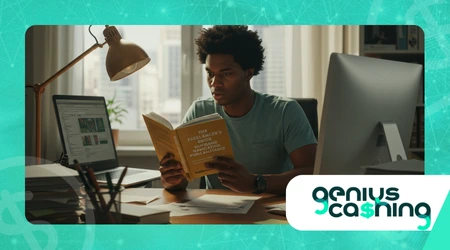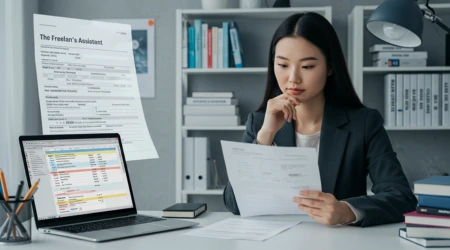The Freelancer’s Survival Guide to Navigating Public Assistance

In 2025, the freelancer’s survival guide to public assistance is more vital than ever. Freelancers, the nimble architects of their own careers, often face unpredictable income streams, making financial stability a tightrope walk.
Anúncios
Public assistance programs government benefits designed to support those in need can be a lifeline, yet navigating them feels like decoding a labyrinth.
Why should independent workers, who contribute $1.3 trillion annually to the U.S. economy, struggle to access these resources?
This guide, crafted with precision, offers freelancers a clear path to understand and leverage public assistance, ensuring they thrive, not just survive.
With real-world strategies, current data, and practical examples, this article illuminates how freelancers can tap into benefits like health coverage, food assistance, and housing support without losing their entrepreneurial edge.
Anúncios
Public assistance isn’t charity; it’s a tool for stability. For freelancers, whose income can swing wildly, these programs bridge gaps during lean months.
The gig economy, now employing over 36% of U.S. workers, demands flexibility, but so do the systems supporting it.
This freelancer’s survival guide cuts through bureaucratic noise, offering actionable steps to secure benefits while maintaining professional momentum.
From Medicaid to SNAP, we’ll explore programs, eligibility, and application hacks, ensuring freelancers can focus on their craft, not survival.
Understanding Public Assistance for Freelancers
Public assistance programs vary by state, but core offerings include healthcare, food, and housing support. Freelancers, often self-employed, face unique eligibility challenges. Unlike traditional employees, their income fluctuates, complicating applications.
The freelancer’s survival guide starts with knowing what’s available: Medicaid, SNAP, LIHEAP, and housing vouchers are key.
Each program has income thresholds, often tied to the federal poverty line (FPL). For 2025, a single-person household’s FPL is $15,060 annually, but freelancers’ irregular earnings muddy the math.
Navigating these programs requires clarity on your financial picture. Freelancers must track income meticulously, as programs assess annual or monthly earnings differently.
For example, Medicaid in many states uses Modified Adjusted Gross Income (MAGI), which includes freelance earnings but excludes certain deductions.
++ Using COVID-Era Benefits to Build Something New in 2025
A clear record separates successful applicants from those stuck in red tape. Use tools like QuickBooks or Wave to organize finances, ensuring eligibility calculations are accurate.
Misconceptions about public assistance abound. Many freelancers assume they earn too much or that applying taints their independence.
This is a myth. Programs like SNAP adjust benefits based on income, offering partial support even for moderate earners. Understanding these nuances empowers freelancers to claim what’s rightfully theirs without stigma.

Healthcare: Securing Affordable Coverage
Healthcare is a freelancer’s Achilles’ heel, with 28% uninsured due to cost, per a 2023 Upwork study. The freelancer’s survival guide prioritizes affordable coverage through Medicaid or marketplace plans.
Medicaid eligibility often hinges on income below 138% of the FPL in expansion states. For a single freelancer, that’s roughly $20,783 in 2025. Marketplace subsidies, available via HealthCare.gov, can lower premiums for higher earners.
Take Maria, a graphic designer in Ohio. Her income fluctuated between $1,500 and $3,000 monthly in 2024. By averaging her earnings, she qualified for Medicaid, saving $400 monthly on premiums.
Maria used HealthCare.gov’s income estimator tool to project her eligibility, a step any freelancer can replicate. Open enrollment for 2025 runs from November 1 to January 15, so mark your calendar.
Don’t overlook state-specific programs. California’s Covered California offers enhanced subsidies, while New York’s Essential Plan covers low-income freelancers for as little as $0 monthly.
Also read: Emergency Business Relief: What Qualifies as a “Disaster”?
Research your state’s options and apply early. Missing deadlines can leave you uninsured, draining your savings when emergencies strike.
Food Assistance: Fueling Your Hustle
Food insecurity affects 12% of freelancers, who prioritize client deadlines over grocery budgets. The freelancer’s survival guide points to SNAP (Supplemental Nutrition Assistance Program) as a game-changer.
SNAP provides monthly benefits averaging $192 per person in 2025 for groceries, easing financial strain. Eligibility depends on income, household size, and expenses like rent or childcare.
Consider Jamal, a freelance writer in Atlanta. His income dipped to $1,200 monthly during a slow quarter. By documenting his rent and utilities, he qualified for $150 monthly SNAP benefits.
Jamal applied online via Georgia’s Gateway portal, a process taking under an hour. Most states now offer similar digital applications, streamlining access.
Read more: How to Track Government Programs Before They’re Announced Publicly
To maximize SNAP, report all deductible expenses, like internet costs for your freelance work. These lower your countable income, boosting benefits.
Check your state’s SNAP website for application tips and deadlines, as delays can cost you a month’s support.
Housing Support: Keeping a Roof Overhead
Housing costs devour 40% of freelancers’ income on average. The freelancer’s survival guide highlights Section 8 vouchers and LIHEAP (Low-Income Home Energy Assistance Program) as critical tools.
Section 8 subsidies reduce rent to 30% of your income, but waitlists are long sometimes years. Apply early through your local housing authority.
LIHEAP, less competitive, helps with energy bills. In 2025, eligible households earning below 150% of the FPL ($22,590 for one person) can receive $200-$1,000 annually.
Freelancers like Sarah, a photographer in Chicago, used LIHEAP to cover winter heating, freeing $300 for marketing her business. Applications are typically processed via state websites or community agencies.
Be proactive: research local housing programs, as some cities offer emergency rental assistance. Document all income and expenses, as inconsistent earnings can complicate eligibility.
Persistence pays off check application statuses weekly to avoid bureaucratic limbo.
Overcoming Application Hurdles
Bureaucracy can feel like quicksand for freelancers. The freelancer’s survival guide emphasizes preparation to avoid delays.
Most programs require proof of income, residency, and expenses. Freelancers must compile 1099s, bank statements, and invoices, as W-2s don’t apply. Digital tools like Evernote can organize documents, speeding up submissions.
Rejections are common but not final. If denied, appeal within 30 days, providing clearer financial records. For instance, a Texas freelancer overturned a SNAP denial by submitting detailed PayPal invoices. Consult local legal aid for free appeal support if needed.
Community resources, like food banks or nonprofit clinics, can bridge gaps while applications process.
Websites like Benefits.gov offer eligibility quizzes, helping freelancers identify relevant programs quickly. Stay organized, follow up, and don’t let red tape deter you.
Tax Implications and Financial Planning

Public assistance can affect taxes, a detail the freelancer’s survival guide can’t ignore. SNAP and LIHEAP benefits are non-taxable, but Medicaid or marketplace subsidies may trigger tax adjustments.
Subsidies require reporting on Form 1095-A, reconciling premiums with actual income. Overestimating income can lead to tax debts, so estimate conservatively.
Freelancers should save 25-30% of income for taxes, using apps like Keeper Tax to track deductions. Deductible expenses like home office costs lower taxable income, potentially boosting benefit eligibility. Consult a tax professional annually to align benefits with tax strategy.
Set up an emergency fund, even $50 monthly, to buffer income dips. Pair this with benefits to create a financial safety net, ensuring lean months don’t derail your freelance career. Stability fuels creativity, not stress.
Building a Sustainable Freelance Career
Public assistance isn’t a crutch; it’s a springboard. The freelancer’s survival guide encourages using benefits to invest in your business.
Freed-up funds from SNAP or LIHEAP can buy software, courses, or marketing. A stable freelancer is a productive one, scaling their hustle without fear of collapse.
Network strategically. Join freelance communities like Upwork’s forums or local meetups to share benefit tips.
One freelancer learned about LIHEAP through a Reddit thread, saving $500 yearly. Peer insights reveal hidden programs and application hacks.
Finally, advocate for yourself. Policymakers often overlook freelancers’ needs. Engage with organizations like the Freelancers Union to push for better access to benefits. Your voice strengthens the gig economy’s safety net, ensuring long-term sustainability.
Key Public Assistance Programs for Freelancers (2025)
| Program | Purpose | Eligibility (Single Person) | Average Benefit | Application Method |
|---|---|---|---|---|
| Medicaid | Healthcare coverage | Income < $20,783 (138% FPL) | Free or low-cost coverage | HealthCare.gov, state sites |
| SNAP | Food assistance | Income < $18,072 (120% FPL) | $192/month | State SNAP portals |
| LIHEAP | Energy bill assistance | Income < $22,590 (150% FPL) | $200-$1,000/year | State LIHEAP offices |
| Section 8 | Housing cost reduction | Income < $22,590 (150% FPL) | 30% of income for rent | Local housing authorities |
Source: U.S. Department of Health and Human Services, 2025 Federal Poverty Guidelines
A Roadmap to Resilience
Think of public assistance like a freelance project: it requires research, strategy, and follow-through. The freelancer’s survival guide equips you to navigate this system with confidence.
In 2025, with gig workers driving economic growth, accessing benefits isn’t just smart it’s essential. These programs empower freelancers to focus on their craft, not survival.
By leveraging healthcare, food, and housing support, you build a foundation for creativity and success.
Don’t let pride or confusion stop you. Every freelancer deserves stability, and public assistance is a tool, not a handout. Start today: check Benefits.gov, organize your finances, and apply for one program.
Small steps lead to big wins. With persistence, the labyrinth of public assistance becomes a clear path to thriving as a freelancer.
Frequently Asked Questions
Q: Can freelancers with irregular income qualify for public assistance?
A: Yes, programs like SNAP and Medicaid average your annual income. Track earnings meticulously to prove eligibility.
Q: How long does it take to get approved for benefits?
A: Approval times vary: SNAP typically takes 30 days, Medicaid 45 days. LIHEAP and Section 8 may take longer due to demand.
Q: Do benefits affect my freelance taxes?
A: SNAP and LIHEAP are non-taxable. Marketplace subsidies require tax reconciliation via Form 1095-A. Consult a tax professional.
Q: What if I’m denied benefits?
A: Appeal within 30 days with clearer financial records. Local legal aid can assist. Check Benefits.gov for other programs.
